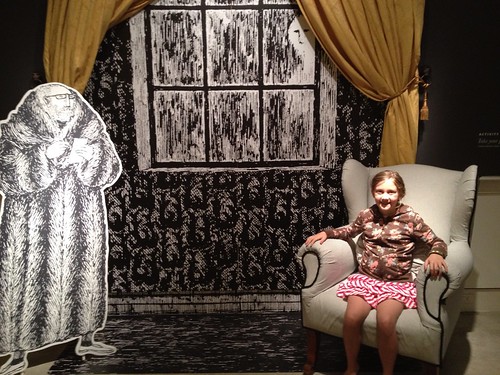I'm working on a long-form project on Monroe, so I'm reading everything I can get my hands on.
Goddess: The Secret Lives of Marilyn Monroe
by Anthony Summers is a comprehensive look at the actress's life, from her erratic childhood to her pursuit of a Hollywood career. Marilyn was atypical from many starlets, as her primary goal wasn't fortune or fame. She wanted adulation and love, but what she seemed to want most was to be a success as an actress, and to transcend her humble and unhappy beginnings. In 1952 Harry Brand, the publicity director for Twentieth Century-Fox said of her, "We're grooming her — or maybe I should say she's grooming herself — to be the sexiest thing in pictures since Jean Harlow."
 |
| Marilyn as Jean Harlow, photographed by Richard Avedon in 1958 for LIFE magazine |
Marilyn was blessed (and possibly cursed) with beauty, but she was more than just pretty, she was incredibly photogenic. The camera loved her. She was made for movies. But she also had a crippling stage fright. She would never have had much of a career on the stage, but film presented the ability to cut and paste her various successful takes. Her directors were often amazed at the performance that showed up on film, versus their experience with the nervous actress they struggled with on set.
As with most biographies of Marilyn, Summers catalogues her many love affairs, possible multiple abortions, and almost constant use of prescription drugs. Originally written in 1985, Summers conducted interviews with many of Marilyn's intimates or staff who knew her, like housekeeper Eunice Murray and "friend" Peter Lawford. He relies a bit too much on the testimony of Robert Slatzer [who controversially claimed he was married to Marilyn for three days in 1952], who keeps turning up, but for no discernible reason, in Marilyn's life — according to him. If Slatzer was truly such a good friend of Monroe, then he was also an enabler, calling her to tell her when Robert Kennedy would be in town, and looking the other way when she was drinking and drugging too much. The major players in her life — Joe DiMaggio, Arthur Miller, and actors and friends like Marlon Brando (all dead now) declined to comment for Summers' book, which just adds fuel to the fire that there will always be questions about the end of her life that must remain unanswered.
Marilyn could be a mass of contradictions. But because of her beauty and the circles she moved in, she took on the status of a goddess. Her brief life was lived not only in front of the cameras, but at a time when many societal changes were happening in America — specifically, for women. Marilyn may have embodied the "Dumb Blonde" and the "Bombshell" on screen, but she was also one of the few women in her time in Hollywood who dared to form her own production company to have some control over her films and her image.
She was a high school drop-out, but she had an endless thirst for knowledge. She was avid about books, and tried to better herself intellectually and spiritually. She loved children, but was plagued with gynecological issues from an early age. "Maurice Zolotow, her early biographer, once penetrated her studio dressing room and noted no less than 14 boxes of pills. Almost all were painkillers prescribed for menstrual cramps." Her friend Amy Greene [wife of Marilyn Monroe Productions business partner and photographer Milton Greene] said, "She told me she'd always use drugs. She was a baby when she started taking pills, 17 or 18 years old."
Marilyn tried desperately in her teens and twenties to prevent pregnancy, as it would have been deleterious to her career. When she was finally ready, in her '30s, her body had sustained too much damage. Or maybe, with her various issues, she was infertile. It was not lost on her that America and the world's goddess of sex could not bring a baby successfully to term. Greene: "Marilyn made the horrendous admission that she had had 12 abortions, some of them back-street butcheries dating back to her earliest days in Hollywood. And then ... she was surprised that she had trouble having babies …" Greene took her to a gynecologist who diagnosed endometriosis and advised a hysterectomy, but Marilyn refused. "I can't do that. I want to have a child. I'm going to have a son."
Marilyn's status as a sex goddess was a boon and a curse, as she told Ben Hecht, in 1954, "Why I was a siren, I haven't the faintest idea. I didn't want to be kissed, and I didn't dream of being seduced … The truth was that with all my lipstick and mascara and precocious curves I was as unresponsive as a fossil. But I seemed to affect people quite otherwise."
 |
| The goddess, photograph by Douglas Kirkland |
Her ability to make love to the camera made her a star, on film and in print. Her oft-told tales of abuse when she was just a young girl may have caused to to think of sex as something she could use, so that it wouldn't use her. As she explained to interviewer Jaik Rosenstein in 1960, "When I started modeling, it [sex] was like part of the job. All the girls did. They weren't shooting all the sexy pictures just to sell peanut butter in an ad, or get a layout in some picture magazine. They wanted to sample the merchandise. If you didn't go along, they were 25 girls who would. It wasn't any big dramatic tragedy. Nobody ever got cancer from sex. ... You know that when a producer calls an actress into his office to discuss a script that isn't all he has in mind. And a part in the picture, or any kind of a little stock contract is the most important thing in the world to a girl, more than eating. She can go hungry, and she might have to sleep in her car, but she doesn't mind that a bit — if she can only get the part. I know because I've done both, lots of times. And I slept with producers. I'd be a liar if I said I didn't …"
Marilyn never apologized for sex, or her use of it to get ahead. Unlike her iconic gold-digging character from
Gentlemen Prefer Blondes, Lorelei Lee, she didn't use it to trap a rich husband, turning down powerful agent and lover Johnny Hyde, who left his long-term marriage to be with her. She could have been comfortably set up for the rest of her life, but she just wanted him to help her get better parts in films, not take care of her. And he did, securing her first prestige parts, in
The Asphalt Jungle and
All About Eve, which helped put her on the map. Marilyn was ambitious as an actress:
"My illusions didn't have anything to do with being a fine actress. I knew how third-rate I was. I could actually feel my lack of talent, as if it were cheap clothes I was wearing inside. But, my God, how I wanted to learn! To change, to improve! I didn't want anything else. Not men, not money, not love, but the ability to act."
Marilyn is frequently portrayed as a woman who was used by Hollywood. She may have gone out with many older men to advance her career, but she always seemed to have a choice whether to date a powerful man like Elia Kazan or Joseph Schenck or Johnny Hyde. Many of her problems came as a result of her pill and alcohol dependence. But there are many who knew her who felt she was ill-served by her friends and mentors. John Strasberg, son of Lee and Paula: "The greatest tragedy was that people, even my father in a way, took advantage of her. They glommed on to her special sort of life. Her special characteristics, when what she needed was love. My parents did give her some love, but it was inextricably linked with the acting."
The most sinister characters in the last few years of her life, at least according to Summers' account, were Frank Sinatra, Peter Lawford, and the Kennedy brothers, who all come off terribly in
Goddess: The Secret Lives of Marilyn Monroe. "The goings in at Lake Tahoe enraged [DiMaggio]. 'He was very upset,' says [DiMaggio pal] Harry Hall. 'She went up there, they gave her pills, they had sex parties, and Joe thought — because at that time he was a friend of Sinatra — it never should have happened ... he [Sinatra] should have left her alone.'" Sinatra, the Kennedys, etc. didn't see Marilyn as a person; just her sex goddess image. Why else would they want to be with such a drug-addled, vulnerable girl, except to say they "did" Marilyn Monroe?
Another account of a typical party at Sinatra's Cal-Neva Lodge, from Marilyn's friend Gloria Romanoff: "I think some of this gets a bit hazy because they were all drinking a good deal. ... Marilyn drank champagne, and some vodka, and would take sleeping pills. The Lawfords walked her about, after midnight, trying to keep her awake, and I think they called Frank in, too. I remember Marilyn telling me one of her problems was that she'd take pills for so long, they didn't work for her the way they did for other people. So she'd begin about nine in the evening, and build up that lethal combination of booze and pills."
Marilyn was caught in a vicious cycle of insomnia, pill-taking, parties, booze, and enablers. She could call friends and doctors at all hours, who would come running with barbiturates. She saw her psychiatrist Dr. Greenson and internist Dr. Engelberg almost every day during the last few months of her life. Both doctors kept prescribing sleeping pills. Although they tried to reduce her drug intake, no one ever seemed to really try to dry her out, or to address her chronic insomnia in some other way. Marilyn must have been beyond annoying to be around, as most addicts can be, yet no one seems to have wanted her to harm herself. Marilyn OD'd many times, and was brought back by friends and doctors many times. It is interesting that many of her previous overdoses coincided with miscarriages. Could she have lost another baby the week or month that she died?
 |
| Marilyn with a glass of champagne, her drink of choice |
Marilyn's life is usually presented as an inexorable, inevitable, and pathetic progression towards her death. Death is waiting for us all, but we wouldn't be able to function if we didn't have hopes and dreams for our present and future. For all of her talk about death, Marilyn did, too. She always wished and hoped that the next guy would be the right guy. She had ambitions for her career, for her life. She was in talks to get back to the set to finish
Something's Got to Give and to appear in some other interesting projects, but unfortunately they never had the chance to come to pass.
Summers gets a little too sidetracked in
Goddess: The Secret Lives of Marilyn Monroe with the Kennedys and their amorous and political complications. Poor Marilyn gets lost in the middle of the book in the Kennedy glare. The last few chapters present a
Rashomon-like account of her final hours. It's well-researched, but full of so many conflicting statements by people who claimed to be "on the scene" that it is depressing and dizzying to read. Autopsy surgeon Thomas Noguchi "had the strong feeling that the case was being delayed, and that the scene of death had been disturbed." There was no
CSI for Marilyn in 1962. "It seemed to me ... it's very likely the police department did close things down. I've encountered this often in my experience, and deaths involving important people…" Noguchi himself may have shown undue reverence in the autopsy, analyzing Marilyn's stomach contents and liver, but not her intestinal tract which may have shown traces of chloral hydrate and Nembutol. The absence of drugs in her stomach continues to fuel conspiracy theorists about drugs being administered to her in some other sinister fashion (e.g. via an enema).
All of Summers' meticulous documenting of links between Jimmy Hoffa, Sam Giancana, Sinatra, and the Kennedys aside, readers will most likely be convinced that Marilyn was not murdered — but her association with the Kennedys led to her death scene being fudged in attempts to cover up the relationship. Not that it did any good, as the open secret of Marilyn's affairs with both Kennedys has survived them all. Maybe singer/actor Sammy Davis, Jr. said it best, "The husbands, and some of the lovers, have found their lives altered forever by their association with Marilyn. 'She hangs like a bat [says Davis] in the heads of the men that knew her.'" Marilyn, her life, and her death, continue to fascinate.
























